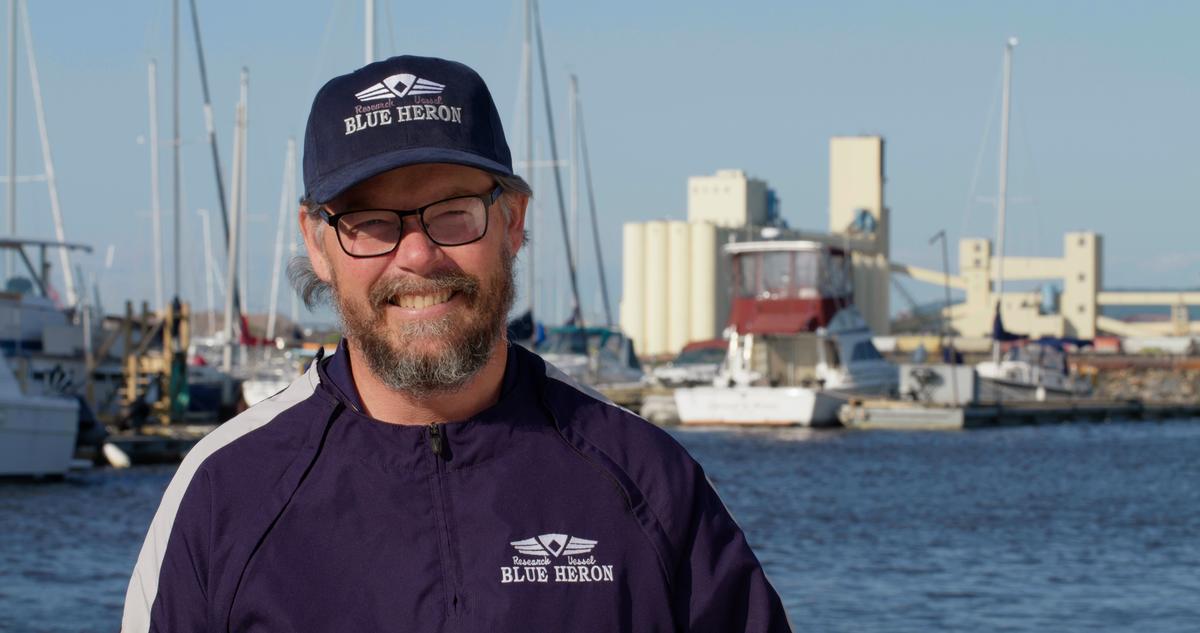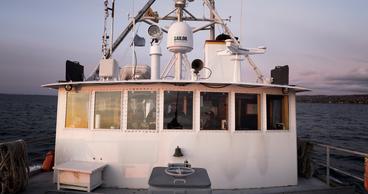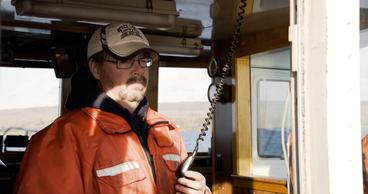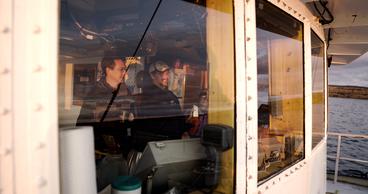It was April, and scientists and crew members aboard the Blue Heron, UMD’s research vessel, were putting a mammoth mooring system into the western arm of Lake Superior. “Everything went perfectly. The crew worked like a Swiss watch out there,” remembers Blue Heron Captain Rual Lee.
But spring on Lake Superior can be volatile, and that volatility took hold as the Blue Heron turned towards Duluth for the 11 hour trip back to shore. “The wind switched, and it got worse. We ended up in a snowstorm– a gale with waves coming behind us,” says Lee. Autopilot does most of the boat’s steering, but the waves got so bad they started overpowering the system and Lee was forced to hand steer successfully back to shore.
Empowering Research
Growing up in Duluth, on sailboats and docks around Lake Superior, gave Lee the mental muscle needed to captain through the storm. And as 1986 UMD grad, he has the added passion for the research that happens on his cruises.
Lee enrolled at UMD pre-Blue Heron, majoring in history and political science. The Large Lakes Observatory, where he would later work, wouldn’t be formed for several years, but a formation of a different type took place. “Going to UMD becomes part of who you are. It affects the way you look at things and how you see the world.”
After graduating, he worked with marine safety gear and in commercial diving. When the Large Lakes Observatory was looking for a captain for the predecessor to the Blue Heron, the Noodin, Lee was hired.
"The Best Part of the Job"
These days, excursions on the Blue Heron can last up to three weeks. In fact, a 2011 cruise brought them from Duluth, through Lake Heron, and into Lake Erie. This extended time gives Lee and his crew plenty of time to get to know the research and the researchers that are aboard. “That’s one of the best parts of the job– to be able to hang around really smart people doing really interesting research.”
Screens are set up in the Blue Heron’s galley kitchen where the crew and scientist talk about what they’re finding over dinner. Lee’s an optimal partner who makes sure that researchers are able to maximize their time on the Great Lakes, collaborating with chief scientists to find out what can be done in what order, depending on the weather.
And scientists can only use the equipment that they have with them, so the crew members are master improvisers… like the time researchers were coring, taking samples off the floor of Lake Superior with a giant straw-like tool, and the core catcher went missing, so they riveted together two pop cans.
“It’s our mission- science support," Lee summarizes. It's a simple explanation for a role that Lee's taken to new depths in the name of impactful research.
More about the Blue Heron
___
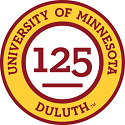
SEE MORE
